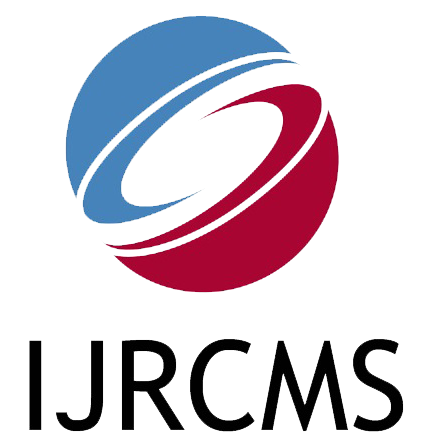| Title: IMPACT OF LEADERSHIP ON EMPLOYEE PRODUCTIVITY |
| Authors: Fatima Shehu Liberty, Ifatimehin Olayemi Olufemi, and Ezekiel Ali Balami |
| Abstract: This abstract focuses on the impact of leadership on employee productivity. Effective leadership plays a crucial role in shaping the performance and productivity of employees within organizations. The study examines various leadership styles and their influence on employee productivity, considering factors such as motivation, communication, and empowerment. The analysis draws upon a range of theories and empirical studies to explore the relationship between leadership and employee productivity. Transformational leadership, which emphasizes inspiring and motivating employees towards a shared vision, is found to have a positive impact on productivity. This leadership style promotes employee engagement, job satisfaction, and a sense of ownership, resulting in increased productivity levels. Moreover, the study discusses the importance of effective communication in leadership and its direct correlation with employee productivity. Leaders who communicate clearly, provide feedback, and foster open dialogue contribute to a positive work environment that enhances productivity. Furthermore, the research emphasizes the significance of empowering leadership practices. When leaders empower employees by delegating authority, encouraging autonomy, and fostering a supportive culture, employees are motivated to take ownership of their work and exhibit higher levels of productivity. The findings of this study highlight the influential role that leadership plays in driving employee productivity. Organizations should prioritize the development of transformational leadership skills and create a supportive and empowering work environment. Investing in leadership training and promoting effective communication practices can contribute to enhanced productivity levels and overall organizational success. |
| Keywords: Leadership, employee productivity, transformational leadership, communication, empowerment, motivation, organizational success. |
| DOI: https://doi.org/10.38193/IJRCMS.2023.5404 |
| PDF Download |
| References: Altalib, H. (1991). Training Guide for Islamic Workers. The International Islamic Federation of Student Organisation & The International Institute of Islamic thought. Virginia, U.S.A Amzat, I.H., & Ali, A.K., (2011). The Relationship between the Leadership Styles of Heads of Departments and Academics Staff’s Self-Efficacy in a Selected Malaysian Islamic University. Interdisciplinary Journal of Contemporary Research in Business. 3 (1). May 2011. Badaracco Jr., J. L., (2002). leading quietly: An unorthodox guide to doing the right thing, Boston: Harvard Business School Press Bass, B. M. (1960). Leadership, psychology, and organizational behavior, New York: Harper Bass, B., & Riggio, R.E. (2006). Transformational Leadership (2nd ed.). Mahwah, NJ: Lawrence Erlbaum Bledsoe, R. W. (2008). An Award-Winning School: The Impact Of Transformational Leadership On Teacher Morale In The Middle School. Doctoral dissertation, Capella University, Minneapolis, MN Bogardus, E. S. (1929). Leadership and attitudes, Sociology and Social Research, Vol. 13, 377-387 Bowden, A. O. (1926) A study of the personality of student leaders in the United States, Journal of Abnormal and Social Psychology, vol. 21, 149-160 Bingham, W.V. (1927) Leadership in H.C. Metcalfe, The psychological foundations of management, New York: Shaw Bryman, A. (2007). Effective leadership in higher education: A literature review. Studies in Higher Education,32(6), 693–710 Cooley, C. H. (1902). Human nature and the social order, New York: Scribners. Davis, R. C. (1942). the fundamentals of top management, New York: Harper. Eran, V.G., (2007). Leadership Style, Organisational Politics, and Employee Performance: An Empirical Examination of Two Competing Models. Personnel Review, 36 (5), 661-683 Fiedler, F. E. (1967). A theory of leadership effectiveness, New York: McGraw-Hill. Gordon, T. (1955) Group-centered leadership – a way of releasing the creative power of groups, Boston: Houghton Mifflin Gouldner, A. W. (1950) Studies in leadership, New York: Harper Hemphill, J. K. (1949) “The leader and his group”. Journal of Educational Research, Vol. 28, 225‐229, 245-246. House, R. J. & Aditya, R. N. (1997). The Social Scientific Study of Leadership: Quo Vadis? Journal of Management, (23)3: 409-473 Iles, P. & Preece, D. (2006) “Developing Leaders, or Developing Leadership? The Academy of Chief Executives’ Programmed in the North East of England,” Leadership, Vol. 2, 317-340 Jago, A. G. (1982) “Leadership: Perspectives in theory and research.” Management Science, Vol. 28, 315-336 Jones, A. M. (2005) “The Anthropology of Leadership: Culture and Corporate Leadership in the American South,” Leadership, Vol. 1, 259-278. Kelloway, E., Barling, J., Kelley, E., & Comotis, F., & Gatien, B. (2003). Remote Transformational Leadership. Leadership & Organisation Development Journal, 24(3), 163–171 Lustik, C. M. (2008). Distance Education Leadership: Self-Perceptions Of Effective Leadership Attributes. Doctoral dissertation, Capella University, Minneapolis, MN. Lyne de Ver, H. (2008) “Leadership, Politics and Development: A Literature Survey,” LECRP Background Paper, http://www.dlprog.org.accessed on the 2nd day of October, 2015 Moore, B. V. (1927) “The May conference on leadership,” Personnel Journal, Vol. 6, 124-128. Munson, E. L. (1921) The Management of Men, New York: Holt. Nash, J. B. (1929) “Leadership,” Phi Delta Kappa, vol. 12, 24-25. Neustadt, R. (1960) Presidential Power, New York: Wiley. Nye, J. S. (2008) The Powers to Lead, New York: Oxford University Press Ohno I., & Shimamura, M. (2007) “Managing the Development Process and Aid, East Asian Experiences in Building Central Economic Agencies,” GRIPS Development Forum, March Paige, G. D. (1977.) The scientific study of political leadership, New York: Free Press Paracha, M.U., Qamar, A., Mirza, A., Hassan, I., & Waqas, H., (2012). Impact of Leadership Style (Transformational and Transactional Leadership) on Employee Performance and Mediating Role of Job Satisfaction: Study on Private School (Educator) in Pakistan. Global Journal of Management and Business Research. 12 (4). March 2012 Peele, G. (2005) “Leadership and Politics: A Case for a Closer Relationship?” Leadership, 1:2, 187-204. Performance Innovation Unit (2007) “Strengthening Leadership in the Public Sector,” A Research Study by the PIU. Schenk, C. (1928) “Leadership.” Infantry Journal, Vol. 33, 111-122. Stogdill, R. M. (1959) Individual behavior and group achievement. New York: Oxford University Press. Thrash, A.B., (2009), Leadership in Higher Education: An Analysis of the Leadership Styles of Academics Deans in Ohio’s 13 State-Supported Universities. (Doctoral dissertation, Capella University) Tichy, N. & Devanna M. (1986) Transformational leadership, New York: Wiley |
International Journal of Research in Commerce and Management Studies (IJRCMS)
ISSN 2582-2292, An open access bi-monthly e-journal
